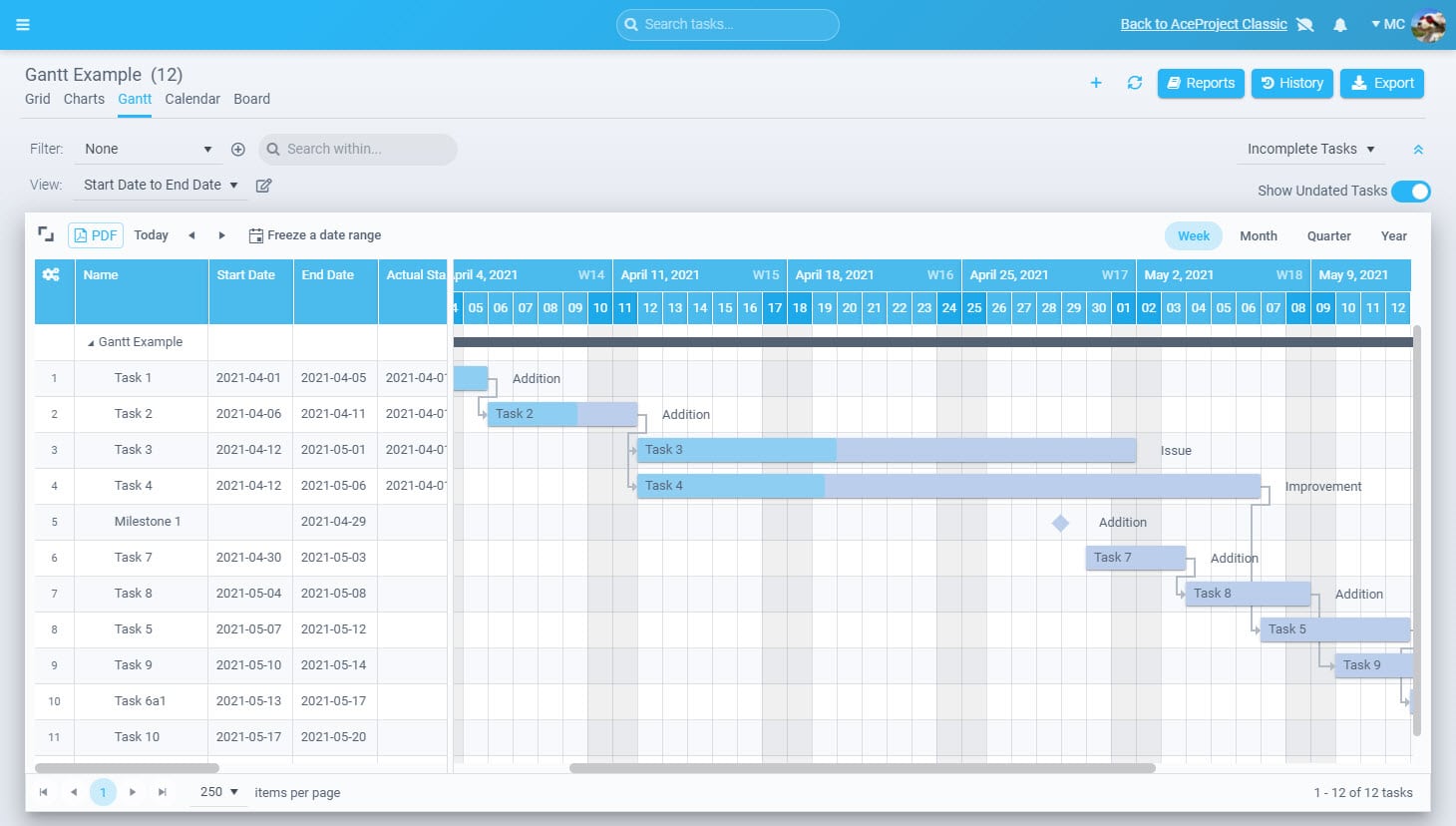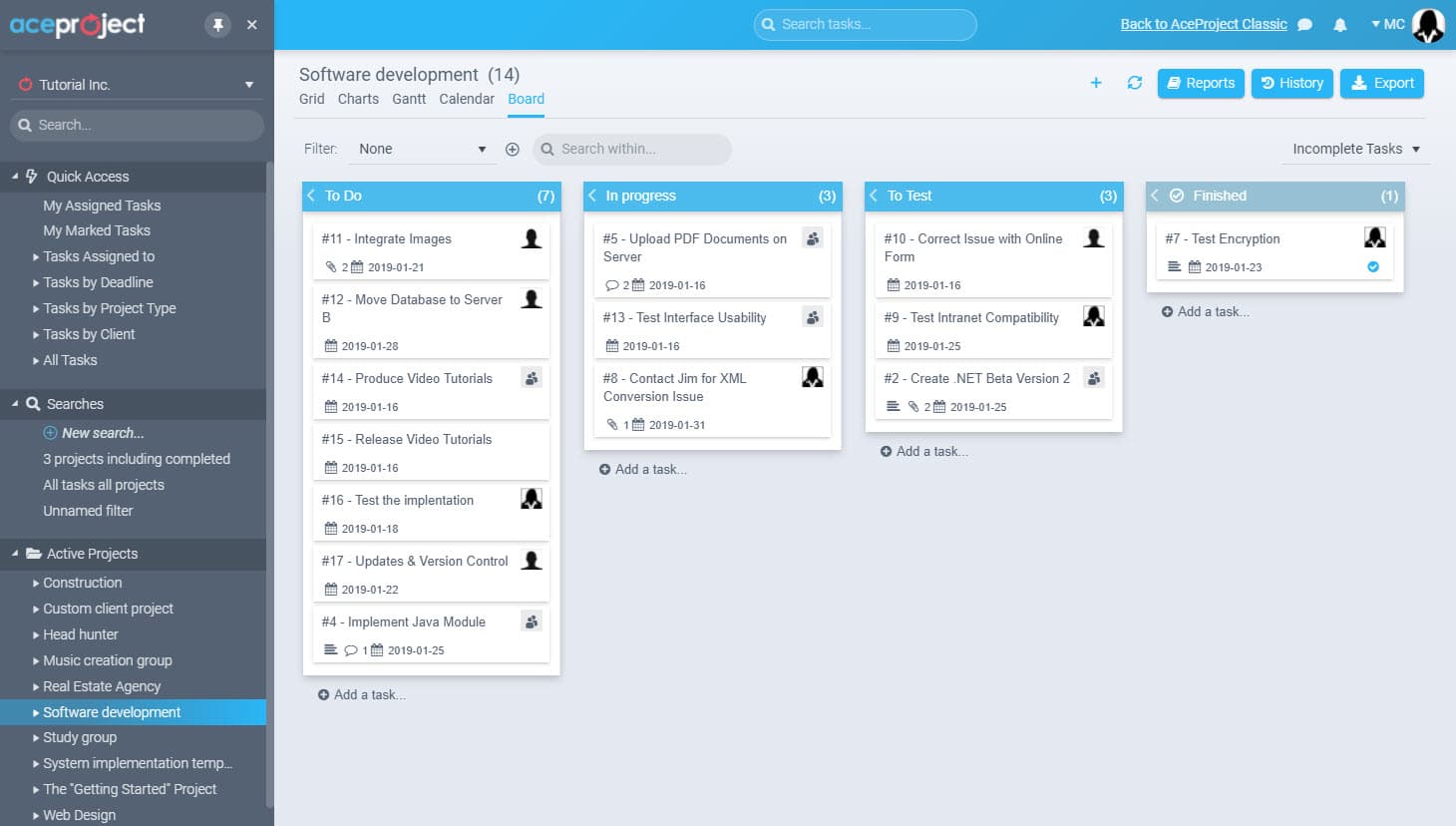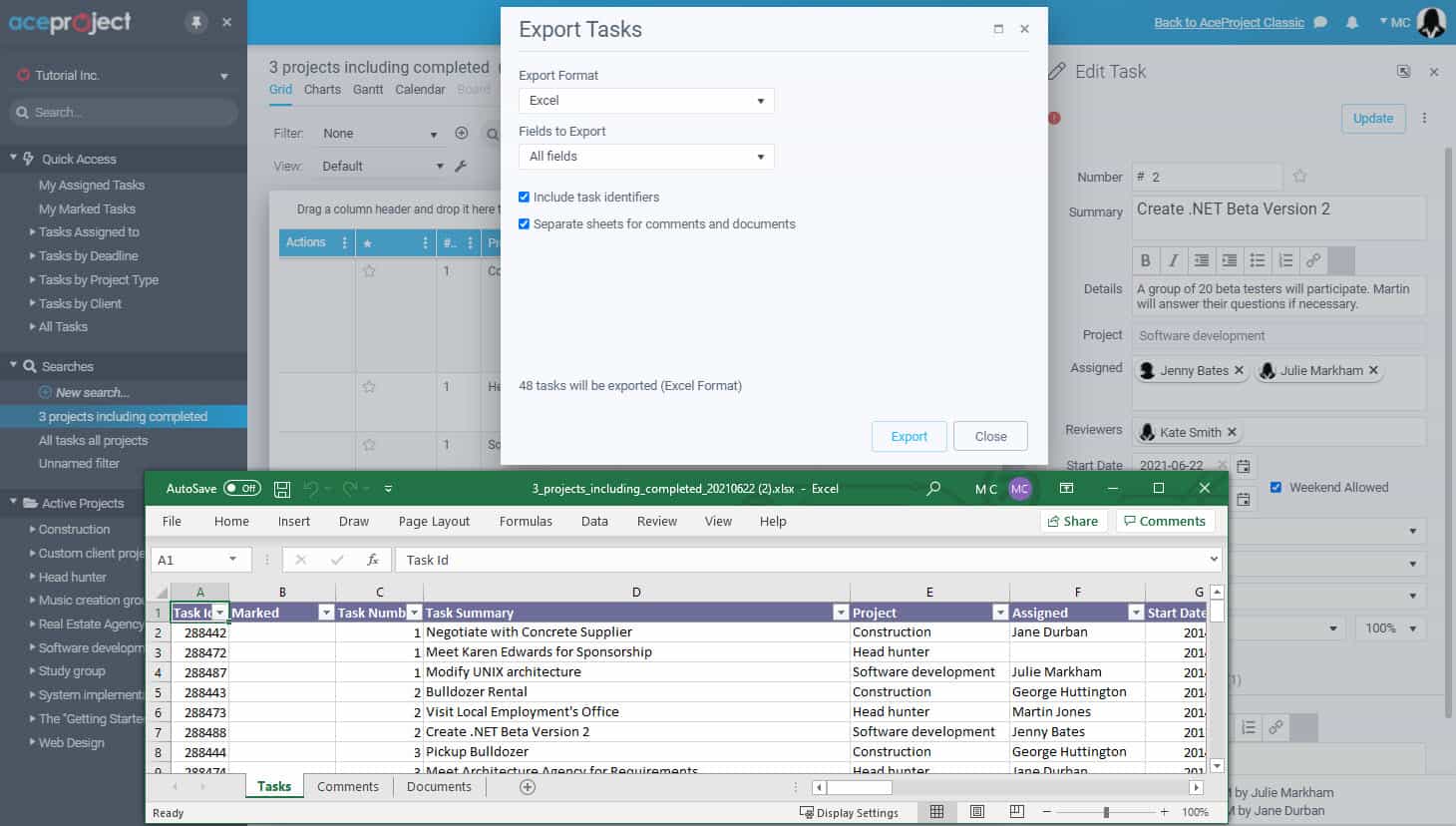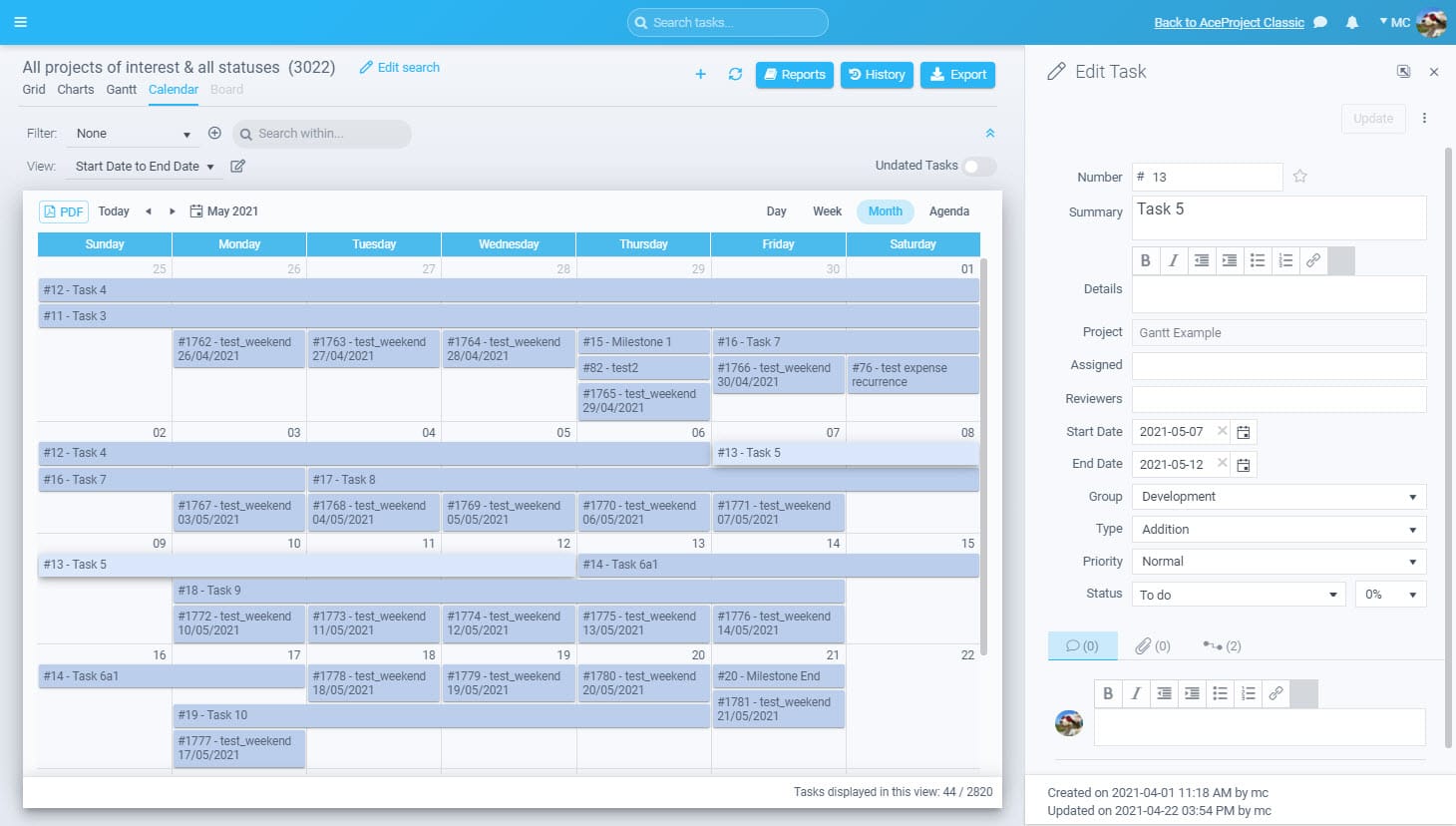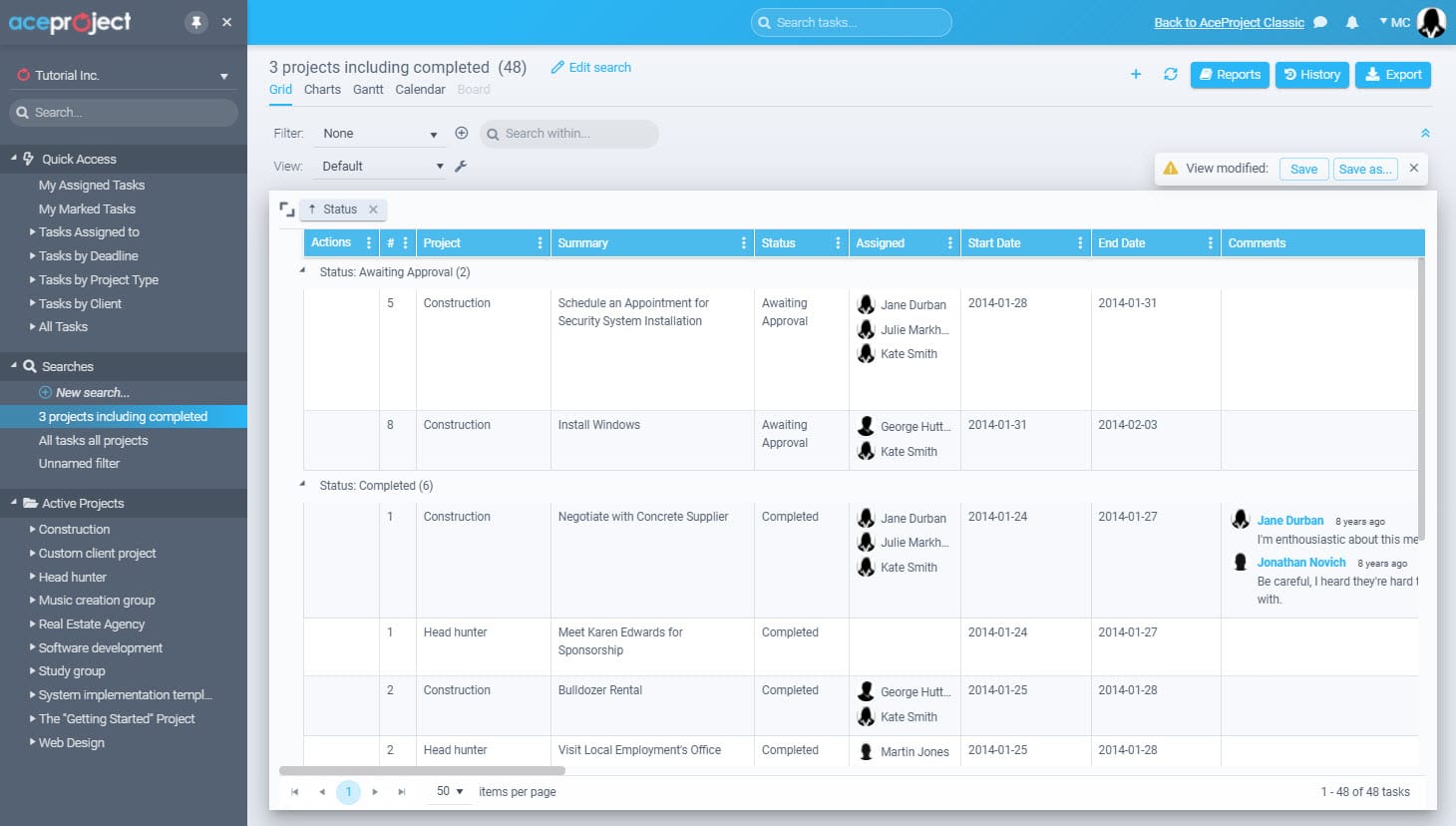Top 6 Best Asana Alternatives in 2024

Asana has established itself as a critical player in project management software, celebrated for its ability to organize tasks and streamline team collaborations efficiently. It offers a user-friendly interface and various features to enhance productivity in diverse work environments. Despite its popularity, it’s essential to recognize that Asana, like any software, is not without its limitations.
These drawbacks can impact its suitability for specific teams and projects, making evaluating its fit for your needs essential. This article will look into Asana’s significant cons and alternative solutions that may better address these challenges. We recommend an alternative for each of Asana’s disadvantages or missing features.

If you need an advanced reporting and exporting platform to boost Asana’s capabilities,
consider Bridge24 for Asana.
The 6 Best Alternatives to Asana Software
While Asana’s limitations may challenge some teams, the landscape of project management tools is rich with alternatives catering to various needs. Each alternative brings unique strengths, addressing specific drawbacks in Asana. The following section will explore such tools, highlighting how they can effectively serve as substitutes in areas where Asana falls short.
Asana Alternative #1: AceProject -> Assign Multiple Users to Tasks with AceProject
A unique feature of Asana is its policy of allowing only one person to be assigned to a task. This approach aims to clarify responsibility but can become a hurdle in scenarios where a task requires the attention of multiple team members. This limitation can be particularly problematic if the assigned individual is unavailable, leaving the task in limbo without the option of reassignment.
AceProject stands out in this regard, offering the flexibility to assign tasks to various team members with custom estimated hours and ensuring that collaborative tasks are handled efficiently and without confusion.
Presentation: AceProject is a powerful project management tool that operates online and can manage projects from beginning to end. It suits both teams and businesses, providing a comprehensive solution that streamlines workflows and reduces uncertainties. This flexible software-as-a-service caters to a variety of project requirements with ease.
Features: AceProject is a project management tool that offers a wide range of features. It includes Gantt charts, advanced reporting tools, customizable project templates, and the ability to set up recurring tasks. Time tracking is made efficient with features like time approvals, a time clock, and detailed time reports. The tool also offers document management features such as sharing, version control, and document-locking functionalities. In addition, AceProject provides expense tracking features, including expense approval processes and detailed expense reports.
Pricing: AceProject presents diverse pricing options designed to accommodate various needs and financial limitations. It starts with a complimentary Basic plan that accommodates up to 3 users and includes unlimited tasks, 3 projects, and 1 GB of storage. For those needing more, there are several tiered paid plans, beginning with the Standard plan at $24 per month, scaling up through Advanced, Silver, and Gold plans. These plans are carefully structured to offer different limits on users, projects, and storage space, providing the flexibility to scale up or down as organizational requirements evolve.
Asana Alternative #2: Monday.com -> Use the location field with Monday.com
Asana has no native feature for directly handling or visualizing location data within its task or project management interface. Users who require geographical tracking or location-specific data management in their project management tool might find this limitation significant, especially if their work heavily involves location-based planning and coordination.
In monday.com, the location column can be used to input addresses or coordinates, and it integrates with map views to provide a geographical context to tasks or projects. This integration enhances spatial planning and tracking capability, which can be critical for certain types of projects or workflows.
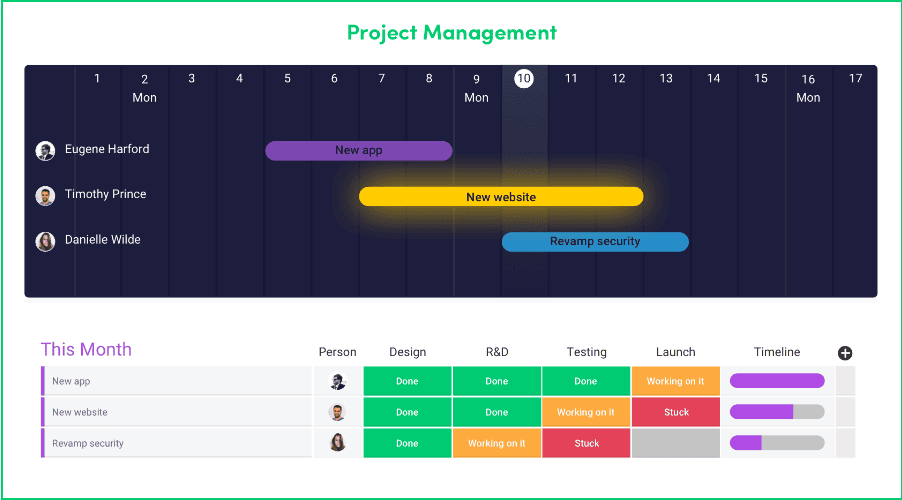
Presentation: monday.com empowers teams to manage tasks, projects, and processes efficiently with its user-centric and intuitive design. It offers a range of customizable features that cater to the diverse communication and collaboration needs of teams of all sizes.
Features:
monday.com stands out by offering over 15 views, such as Kanban, Gantt charts, and Calendar, allowing tasks and projects to be visualized in a way that aligns with your workflow. The platform also provides more than ten drag-and-drop widgets for customizable dashboards, enabling data visualization tailored to your decision-making needs.
Uniquely, monday.com includes a native Time Tracking column, a feature not commonly found in project management software. This allows for precise tracking of time spent on projects and tasks. Additionally, monday.com integrates seamlessly with popular tools like Microsoft Teams, Gmail, and Slack, centralizing all work in one convenient location.
Pricing:
monday.com’s pricing strategy includes a free plan, four premium tiers, and a 14-day free trial with unlimited users and boards, allowing a thorough evaluation of its features. While Asana’s free offering suits teams of up to 15 members, monday.com’s premium plans provide more excellent value for money.
- Free Plan: Supports two users with features like a Kanban view, over 200 templates, and more than 36 column types.
- Basic Plan: Starting at $9/seat/month (billed annually), this plan allows comprehensive teamwork management and includes unlimited items, documents, and boards.
- Standard Plan: Priced from $12/seat/month (billed annually), this plan enhances collaboration with additional views like calendar, map, timeline, Gantt charts, advanced search, automation, and integrations.
- Pro Plan: At $19/seat/month (billed annually), it’s designed for complex workflow streamlining, offering a chart view, formula column, time tracking, and private boards and documents.
- Enterprise Plan: Custom pricing is available for larger organizations needing advanced reporting, analytics, and enhanced security.
Asana Alternative #3: Wrike -> Export your project and tasks to Excel with Wrike
Asana’s data export and import capabilities are confined to JSON and CSV formats. This limitation can be cumbersome for teams that require data in more universally accessible formats like PDF or Excel, necessitating additional tools for conversion.
Wrike distinguishes itself as an optimal tool for native data exportation to Excel, primarily due to its robust and integrated exporting features that support a range of file formats, including Excel, without additional software or plugins.

Wrike is a great alternative to Asana, designed to assist teams in project management, resource planning, work organization, and boosting collaboration.
Wrike’s Interface and Features Wrike’s platform is enriched with dashboards, proofing, dynamic request forms, customizable automations, and over 400 integrations. Its standout proofing feature streamlines the feedback process by allowing team members to comment in real-time on critical files, centralizing feedback and encouraging creative exchanges. Wrike also offers various views, including Gantt charts, Kanban boards, and calendars, to track and visualize project progression.
Wrike is particularly suitable for larger organizations emphasizing detailed project management and task organization. However, it’s worth noting that fully leveraging Wrike’s capabilities may require a steeper learning curve.
Wrike’s Pricing Options Wrike provides a range of pricing plans tailored to teams of different sizes, each with its storage limitations.
- Free Plan: Ideal for teams just starting, offering basic task management features but with restricted views, task limits, and storage capacity.
- Team Plan: Starting at $9.80/user/month (billed annually), this plan is geared towards growing teams of 2-25 members. It includes interactive Gantt charts, board sharing with up to 20 collaborators, and 2GB of storage per user.
- Business Plan: Priced from $24.80/user/month (billed annually), this plan is suitable for teams of 5-200 members, offering advanced features like automations, templates, customized workflows, and 5GB of storage per user.
- Enterprise Plan: Custom pricing is available for larger teams needing enterprise-level security features, such as user audit reports, custom access roles, and 10GB of storage per user.
- Pinnacle Plan: With custom pricing, this plan caters to teams with intricate work demands, offering advanced reporting, budgeting tools, billable hours tracking, bookings, and up to 15GB of storage per user.
Asana Alternative #4: Trello -> Use the Advanced Checklists with Trello
Unlike some competitors, Asana doesn’t offer a straightforward checklist feature for tasks, relying instead on subtasks. This can add unnecessary complexity to simple tasks.
Trello Advanced Checklist allows users to add detailed checklists within cards, which can be assignable to a member and have a due date. This feature enables breaking down tasks into smaller sub-items, enhancing organization and efficiency in project execution.
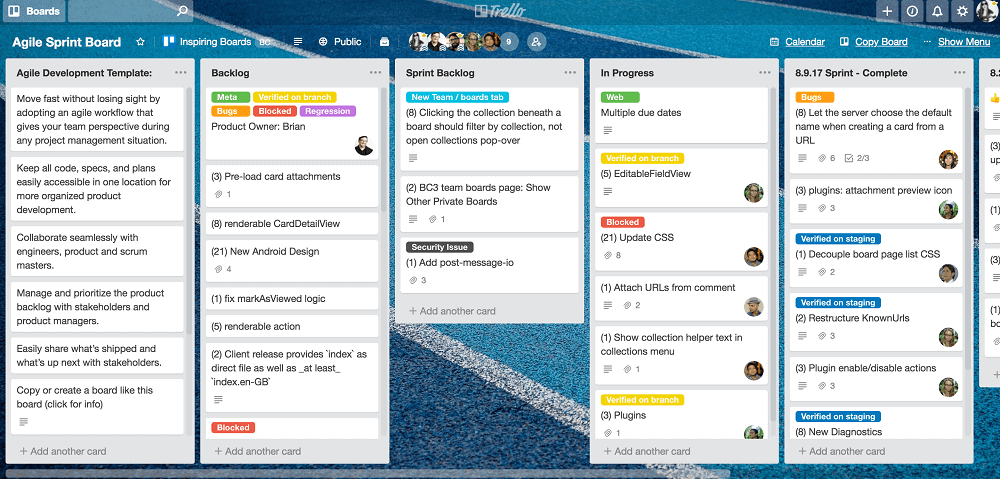
If you’re familiar with the search for project management software, chances are you’ve encountered Trello, a well-known alternative to Asana. Trello utilizes a Kanban-inspired system, organizing projects into boards. Each board is populated with cards that include notes, attachments, images, documents, and more, facilitating team collaboration.

Whenever you need an advanced reporting and exporting platform that will boost Trello’s capabilities,
consider Bridge24 for Trello.
Trello Advantages
- Trello’s Butler feature allows for the creation of custom commands to automate a wide array of actions.
- It offers multiple view options: board, timeline, table, shared calendar, dashboard, and map views.
Trello Limitations
- The platform has restricted email integration capabilities.
- It may not be the best fit for managing large-scale projects.
Trello Pricing Structure Trello has various pricing plans, with paid options beginning at $5 per user per month.
Asana Alternative #5: Basecamp -> Low Cost for Unlimited Users With Basecamp
Starting at $11 per user, Asana’s pricing can significantly burden small companies or startups operating on tight budgets. This cost barrier may limit accessibility for smaller teams. The following Advanced level is $25 per user, which is highly costly if you need time-tracking and portfolios.
Basecamp is known for its flat-rate pricing at $299 for unlimited users, which is more economical for 20 users and more. It provides a comprehensive suite of project management tools without the per-user cost, making it a cost-effective solution for most companies.
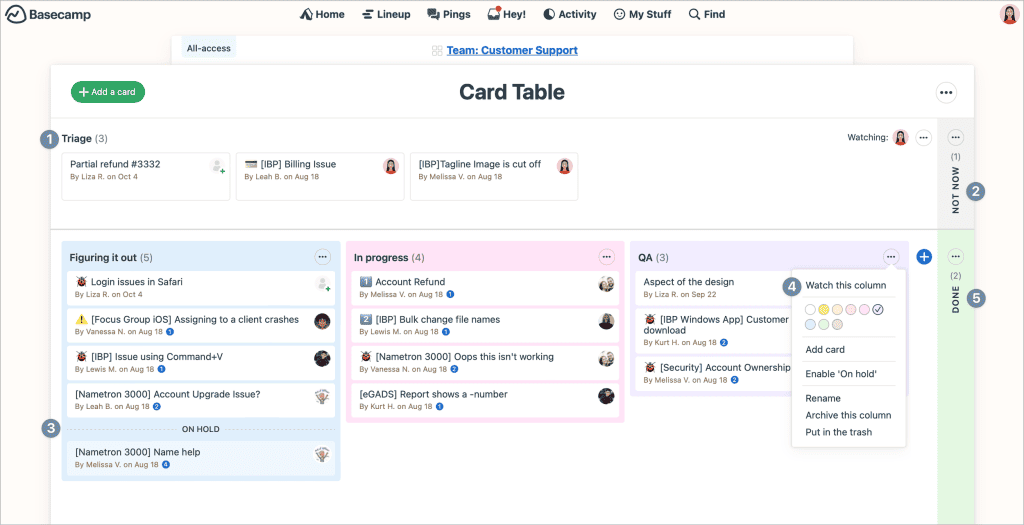
Basecamp positions itself as an alternative to Asana by combining project management and communication functionalities. Its pricing structure includes a basic monthly plan per user, but it stands out with a popular flat-rate option, a rarity among its peers. Basecamp excels as a tool for distributed or remote teams, offering various collaboration tools like message boards, real-time group chat, and automatic check-ins. Its interface is notably intuitive and user-friendly.

Whenever you need an advanced reporting and exporting platform that will boost Basecamp’s capabilities,
consider Bridge24 for Basecamp.
While Basecamp is a straightforward alternative to Asana, it has some notable limitations. For instance, it lacks task prioritization and categorization features like tags or labels, which are standard in many other project management tools. Time tracking, a vital component for many, is also absent in Basecamp. Additionally, its customization options are limited. A significant concern is managing its chat features; conversations can become unwieldy, and there’s no option to archive them. These gaps might prompt users to seek other alternatives to Asana.
Basecamp Pros & Advantages
- Tools designed to enhance team collaboration.
- Intuitive and straightforward interface.
- Mobile application available for both Android and iOS.
- Offers a 30-day free trial period.
Basecamp Drawbacks & Limitations
- More limited in project management features compared to other alternatives.
- Lacks Gantt chart functionality.
- There are no features for tracking project costs.
Basecamp Pricing Details
- Standard Basecamp Plan: Priced at $15 per user per month.
- Pro Unlimited Plan: Available at $299 per month.
Asana Alternative #6: Bitrix24 -> Use Bitrix24 with its built-in CRM Integration
Bitrix24 positions itself as a versatile alternative to Asana by offering a broader suite of tools beyond project management, including CRM functionalities, communication tools, and website-building capabilities. Unlike Asana, which focuses primarily on task and project organization, Bitrix24 provides an integrated platform for managing customer relationships, sales, and marketing activities, making it a comprehensive solution for businesses.
Bitrix24 emphasizes collaboration and communication by incorporating features like video conferencing, live chat, and social networking, which are not native to Asana. It also caters to businesses looking for a more holistic approach to work management, allowing users to manage tasks, projects, contacts, and sales pipelines all in one place. By offering a wide range of features at no initial cost, Bitrix24 appeals to small and medium-sized enterprises seeking an all-encompassing platform that goes beyond the capabilities of traditional project management tools like Asana.
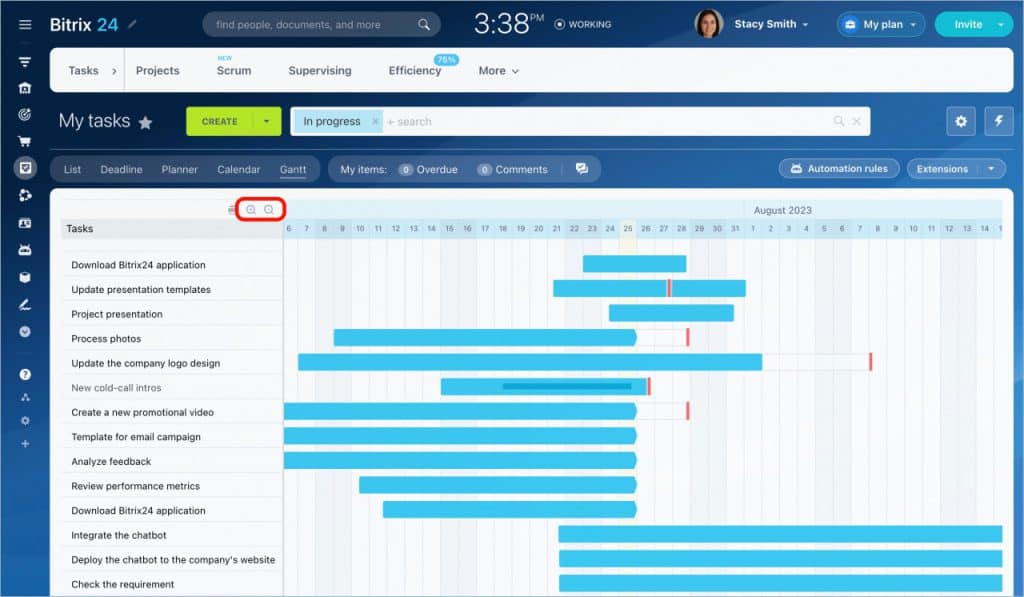
Bitrix24 Pros & Advantages
Bitrix24 is a comprehensive platform designed to streamline business operations, from project management to customer relationship management. Its flexibility and wide range of features make it an attractive choice for businesses of all sizes. Here are five advantages of using Bitrix24:
- All-in-One Solution: Bitrix24 combines project management, CRM, communication tools, and website building in one platform, eliminating the need for multiple software solutions.
- Scalability: With plans ranging from a free version to enterprise-level options, Bitrix24 grows with your business, ensuring you have the necessary tools at each stage of development.
- Enhanced Collaboration: Integrated communication tools like video conferencing, live chat, and social intranet features facilitate seamless collaboration among team members, regardless of location.
- Advanced CRM Features: Bitrix24’s robust CRM system offers lead management, sales funnel tracking, and automation capabilities that help businesses improve customer relationship management processes.
- Customization and Integration: The platform allows for extensive customization and integrates with various third-party applications, enabling businesses to tailor it to their needs and workflows.
Bitrix24 Pricing Details
Bitrix24 offers a variety of pricing plans tailored to different business needs, including cloud-based and self-hosted options. The Cloud-based plans are trendy for their convenience and accessibility, consisting of:
- Bitrix24 Free: A free plan for small teams and startups covering essential communication and collaboration.
- Bitrix24 Basic ($49/month): Suited for small to medium businesses, offering extended features, more users, and extra storage.
- Bitrix24 Standard ($99/month): Designed for medium to large businesses focusing on CRM, sales, and project management.
- Bitrix24 Professional ($162/month): For medium to large organizations needing advanced communication, collaboration, and CRM features.
- Bitrix24 Enterprise ($325/month): Tailored for large enterprises requiring complex customization, extensive storage, and additional services.
These plans ensure that businesses of all sizes can find a suitable option to meet their operational requirements and scale their activities.
Conclusion
In project management software, each platform carries its unique strengths and limitations. Asana, while robust and user-friendly, may not meet all the specific needs of every team or project. Alternatives like Wrike, monday.com, Trello, and Basecamp offer varied functionalities that cater to different requirements. Whether it’s the need for detailed time tracking, multiple assignment capabilities, or budget-friendly options, these alternatives provide viable solutions. The key to effective project management is selecting a tool that aligns seamlessly with your team’s workflow, communication style, and project complexity.
Choosing the right project management software is a critical decision that can significantly impact the efficiency and productivity of a team. It’s essential to weigh the pros and cons of each option, considering factors like team size, project complexity, and specific feature requirements. Remember, the best tool is the one that fits effortlessly into your existing workflow, enhances team collaboration, and ultimately drives your projects toward successful completion. In this ever-evolving field, staying informed and adaptable to new tools and features can be the difference between merely managing tasks and excelling in project execution.
Suggested Asana articles: The Pros and Cons of using Asana Software | Asana Pricing Plans & Costs Guide




